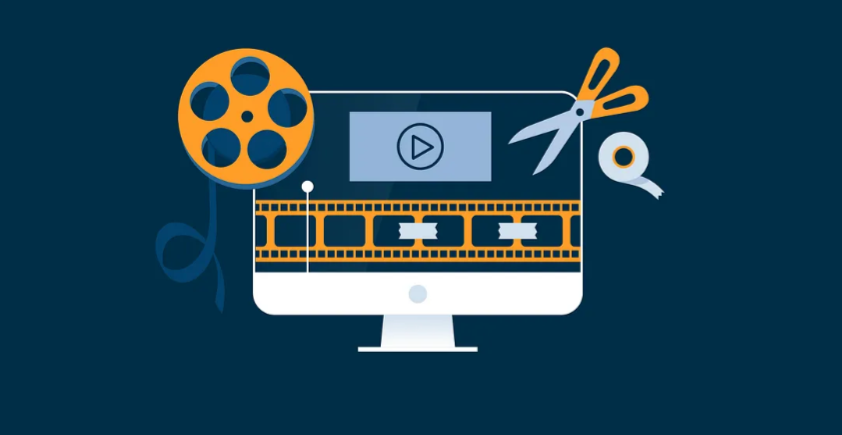Introduction: The Rise of AI in Film Editing
Every frame counts in the high stakes environment of Hollywood production. From indie arthouse hits to blockbuster superhero franchises, post-production demand for faster, smarter, and more efficient technologies has never been stronger. That’s where AI video editing tools come handy.
Artificial intelligence will not only be a futuristic idea in 2025; it will also be a useful tool transforming video creation. Using these tools, major studios, streaming platforms, and even YouTube influencers are cutting editing time, improving visual storytelling, and significantly lowering costs.
But among the top editors and directors in the field, what artificial intelligence video editing tools do they personally use? For indie producers, are they reasonably priced? Regarding features and performance, how do they stand?
This comprehensive guide dives deep into the top 7 AI video editing tools used by Hollywood filmmakers in 2025, showcasing how artificial intelligence is shaping the future of cinema.
The Importance of AI Video Editing Tools in Hollywood
Hollywood’s obsession with efficiency has found a match made in heaven with AI. The best AI video editing tools can now automate hours of manual labor—cutting scenes, enhancing color grading, syncing audio, and even generating trailers or short-form teasers.
Why Hollywood Loves AI for Editing
- Speed: Editing a feature film that once took months can now be completed in weeks.
- Precision: AI algorithms reduce human error, ensuring scenes are cut perfectly to the beat or emotion.
- Budget-Friendly: Without using big post-production teams, artificial intelligence enables smaller studios to create breathtaking images.
- Creativity: Generative options provided by artificial intelligence tools let editors try cuts they might not have thought of personally.
Whether you’re an aspiring filmmaker or a seasoned editor, knowing which AI video editing tools are industry favorites can make or break your next project.
Top 7 AI Video Editing Tools Used by Hollywood in 2025
Let’s break down the most powerful AI video editing tools that are not just hype—but have been actively used on big-budget productions and Netflix-level series in 2025.
1. RunwayML: The Indie Director’s Best Friend
Deep machine learning features and an easy-to-use interface define RunwayML. Applied in film and music video editing, this tool provides real-time video masking, background removal, object tracking, and even artificial intelligence-generated sequences.
Key Features:
- AI video inpainting to remove objects or people.
- Text-to-video generation using Gen-2 model.
- Motion tracking for seamless effects.
- One-click background editing.
Use Case:
Director Ava DuVernay reportedly used RunwayML for prototyping visual effects in her upcoming dystopian thriller.
2. Descript: Hollywood’s Secret Weapon for Dialogue Editing
Originally known for podcast editing, Descript has evolved into a full-fledged AI video editing tool perfect for interviews, documentaries, and script-based films.
Key Features:
- Overdub: AI voice cloning for quick dialogue replacements.
- Automatic transcription and text-based editing.
- Studio Sound: Enhances poor audio recordings.
Use Case:
Used in post-production for Netflix documentaries like “Voices Unheard,” where AI helped refine hours of interview footage.
3. Pictory: Trailer Creation in Minutes
If you’ve watched a movie trailer in 2025, chances are it was created—at least partially—using Pictory. This AI-powered tool is designed to convert long-form video into highly engaging snippets.
Key Features:
- Auto-highlighting of key moments.
- Subtitle generation and editing.
- Visual summaries from scripts.
Use Case:
Pictory is rumored to be used in creating teaser trailers for Marvel’s spin-off series.
4. Magisto: Disney’s Marketing Team Favorite
Owned by Vimeo, Magisto uses emotion recognition to craft cinematic edits from raw footage. It’s an ideal tool for promotional videos and social content.
Key Features:
- Emotion-based scene segmentation.
- AI-matched music and transitions.
- Branded video templates.
Use Case:
Disney reportedly used Magisto in early promos for “Frozen 3” teaser campaigns.
5. Wisecut: Real-Time Scene Cutting with AI Precision
Wisecut focuses on quick, professional cuts without manual trimming. It’s ideal for YouTube creators, but surprisingly, many independent film editors have started incorporating it into their rough cut workflows.
Key Features:
- AI-driven jump cuts.
- Background music ducking.
- Auto subtitles with translations.
Use Case:
Indie filmmakers editing micro-budget horror flicks used Wisecut to finalize scenes within days, not weeks.
6. Adobe Premiere Pro with Sensei AI: The Legacy Giant Reinvented
Adobe’s integration of its AI engine, Sensei, into Premiere Pro has made it a staple for blockbuster post-production. With advanced tools like scene detection and content-aware editing, it’s tailored for professional-grade workflows.
Key Features:
- Scene edit detection.
- Auto reframe for vertical content.
- Lumetri AI color grading.
Use Case:
Christopher Nolan’s editing team reportedly used Adobe Premiere with Sensei AI for pre-visualizations in “Interstellar 2.”
7. Lumen5: AI-Powered Social Shorts from Film Footage
Lumen5 is gaining traction for creating shareable behind-the-scenes reels, actor interviews, and marketing materials from full-length footage.
Key Features:
- Script-to-video automation.
- AI layout and design for social formats.
- Branded templates for film promotion.
Use Case:
Paramount used Lumen5 to produce bite-sized videos promoting “Top Gun: Maverick” on TikTok and Instagram.
How Hollywood Directors Use AI Video Editing Tools in 2025
Even the most traditional filmmakers have started embracing AI video editing tools. Why? Because they want to spend less time behind the editing screen and more time directing talent.
Real Examples:
- Martin Scorsese reportedly used RunwayML to visualize alternate edits for “Killers of the Flower Moon.”
- Chloé Zhao leaned on Descript’s overdub feature to fix voice inconsistencies during ADR sessions.
- Jordan Peele used Pictory to quickly cut promotional teasers for his psychological thriller series.
Workflow Integration
Here’s how a typical Hollywood post-production flow looks in 2025 with AI:
- Script Ingestion: Tools like Descript or Lumen5 generate preliminary visuals.
- Scene Editing: Premiere Pro + RunwayML automates scene detection and trimming.
- Audio Polish: Descript and Wisecut enhance sound clarity and sync.
- Marketing Content: Pictory and Magisto handle trailers and promos.
- Social Distribution: Lumen5 formats videos for Instagram, TikTok, and YouTube.
Cost Comparison of AI Video Editing Tools in 2025
Let’s break down how much each of these AI video editing tools costs—especially for indie creators or small production studios trying to break into Hollywood standards.
| Tool | Monthly Cost | Best For | Free Version |
|---|---|---|---|
| RunwayML | $12 – $76 | FX-heavy editing, object removal | Yes |
| Descript | $15 – $30 | Script-based editing | Yes |
| Pictory | $19 – $99 | Trailer and short form content | Yes |
| Magisto | $9.99+ | Social media video edits | Yes |
| Wisecut | $10 – $29 | Real-time scene cutting | Yes |
| Adobe Premiere + Sensei | $20.99+ | Full-scale professional editing | No |
| Lumen5 | $19 – $149 | Promotional and branded videos | Limited Free |
ROI Consideration
While Adobe Premiere remains on the pricier side, tools like RunwayML and Pictory offer tremendous value for fast-paced projects. Wisecut and Descript are perfect for creators on a budget who still want high-end results.
The Future of AI Video Editing Tools in Hollywood
As AI becomes increasingly mainstream, so too will its role in storytelling. In the next few years, we can expect:
- Full scene generation from scripts using natural language.
- AI actors and voiceovers generated in post-production.
- Hyper-personalized trailers based on viewer behavior and preferences.
While some fear AI will replace human editors, the current reality is more collaborative. AI video editing tools amplify the creativity and efficiency of editors, rather than replace them.
Final Thoughts: Are AI Video Editing Tools the Future of Filmmaking?
Absolutely. In 2025, Hollywood’s elite and up-and-coming creators alike are embracing AI video editing tools as indispensable assets. These tools don’t just save time—they open doors to creative possibilities that were once locked behind technical limitations or big budgets.
These systems are democratizing filmmaking from real-time editing to emotionally based scene structuring. Whether your project is a $100 million blockbuster or a brief YouTube documentary, the correct AI video editing tool will help your narrative to shine.
Thus, it’s time to join the AI revolution in narrative regardless of your level of experience—film student, YouTube producer, or seasoned director. One thing 2025 has made abundantly clear is that artificial intelligence video editing tools are the now rather than the future. Also Read about AI Governance Tools in Hollywood.





